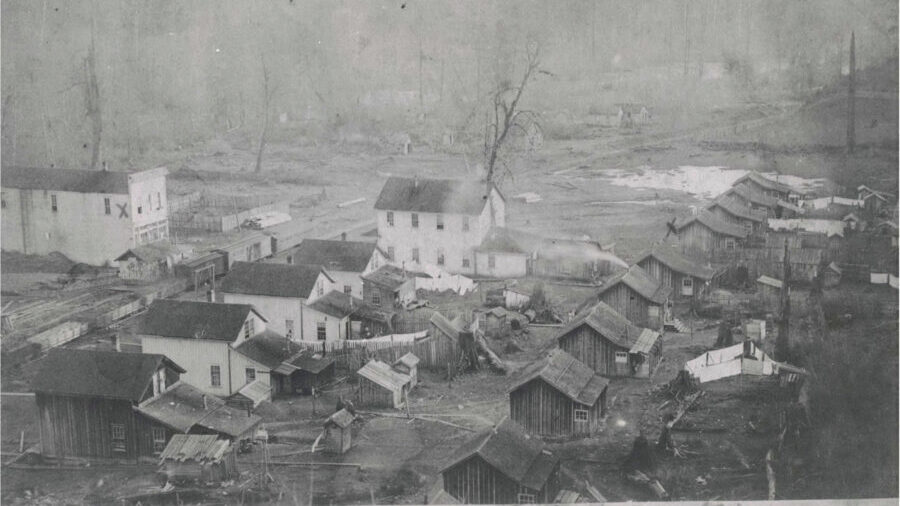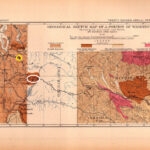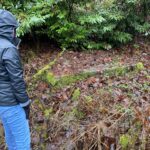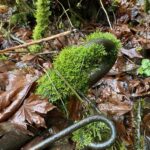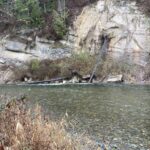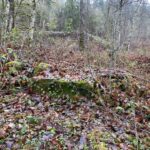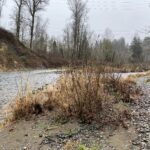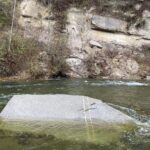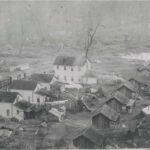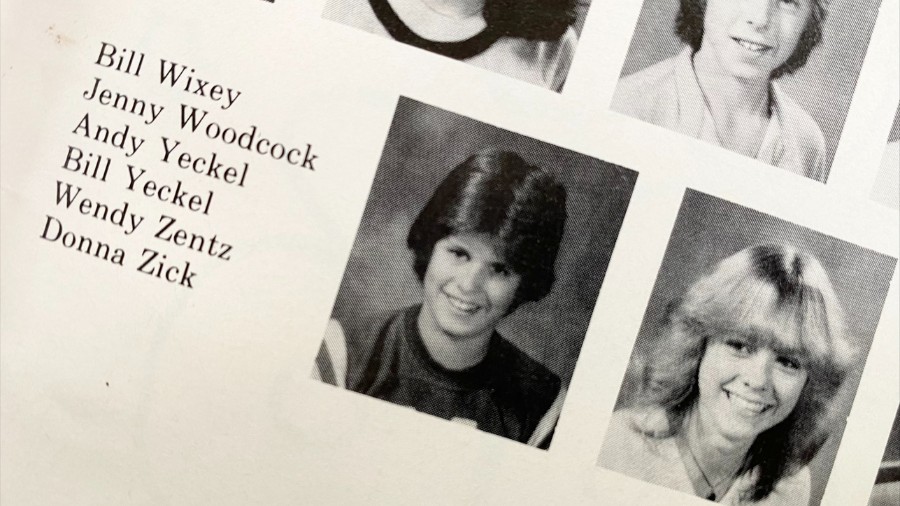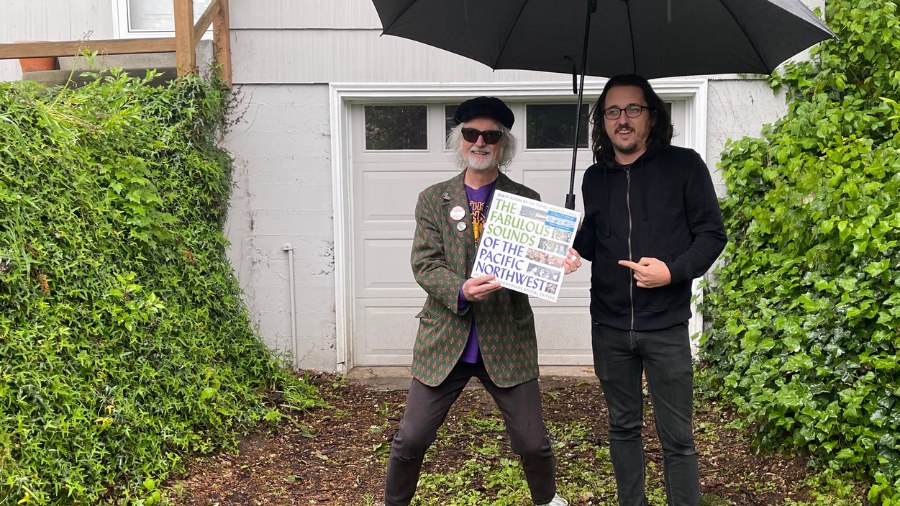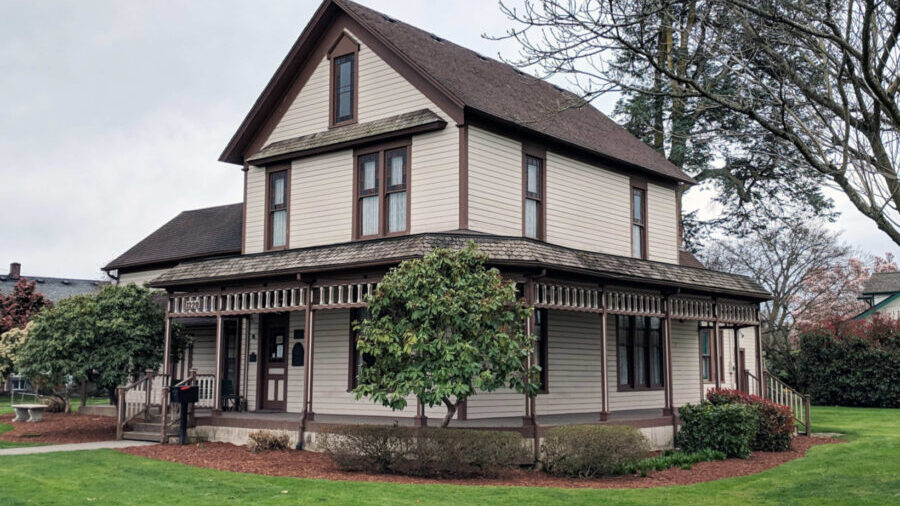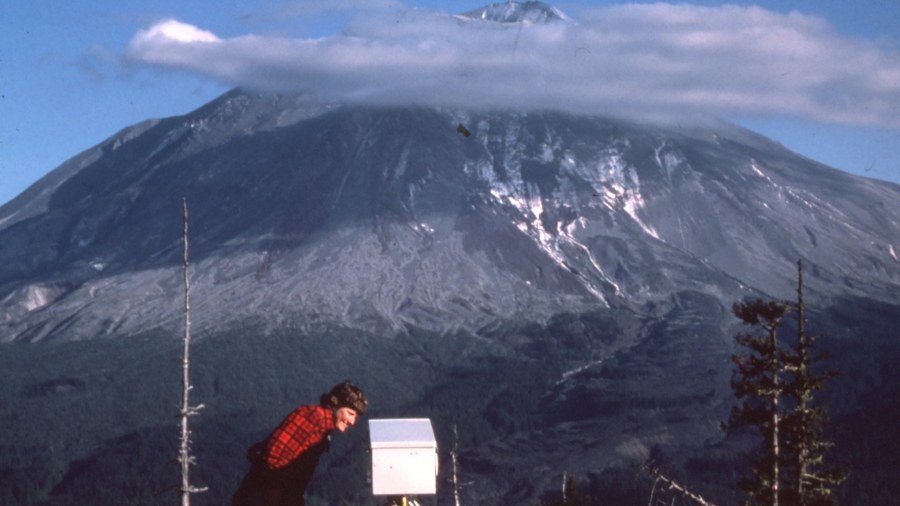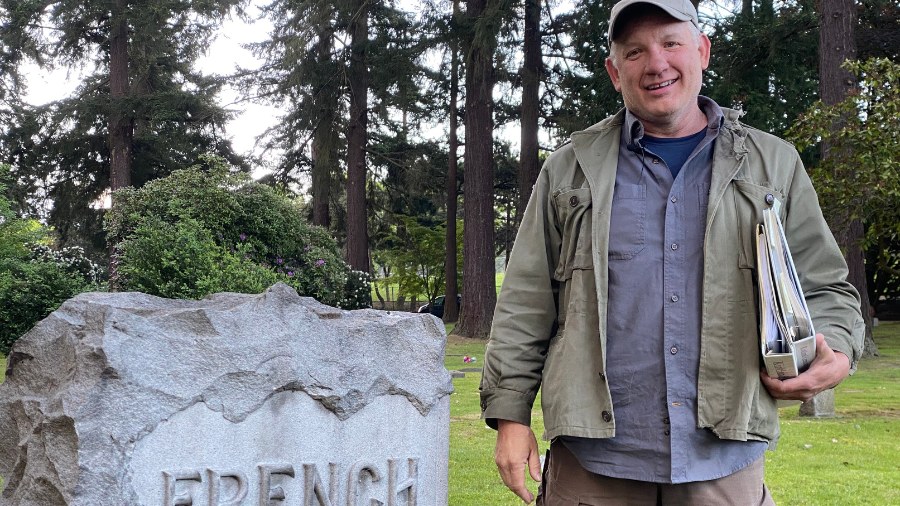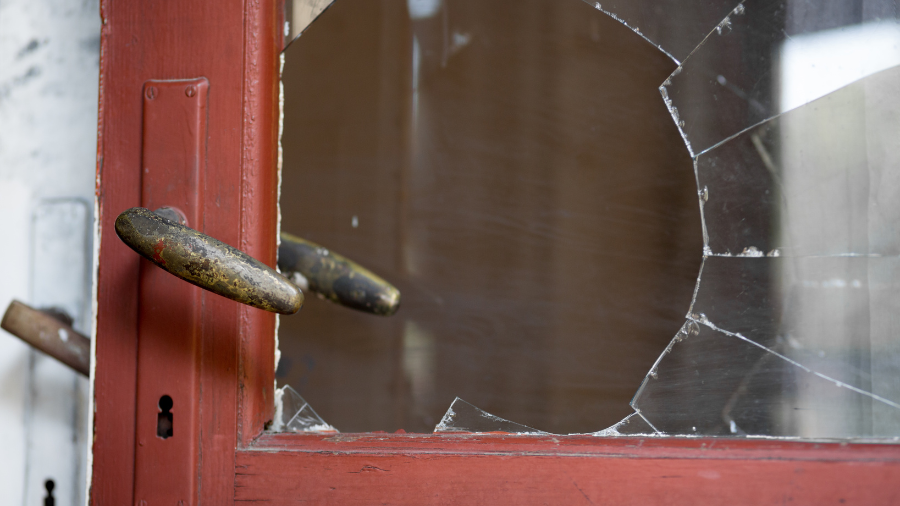Mystery stretches from Cedar River ghost town to “Boys in the Boat”
Jan 10, 2024, 3:05 PM
Along the Cedar River southeast of Renton, the remains of a coal mining operation – and the ghost town that was once a bustling home to the miners who worked the slope mine there – might contain the clues necessary to help solve a mystery directly related to one of the “Boys in the Boat.”
This story has three distinct elements. The first is the Franklin Mine Disaster of August 1894, the second-deadliest mine accident in Washington history, which left 37 men dead in the aftermath of an underground explosion and fire. The mine and Franklin townsite is about three miles east of Black Diamond in South King County and is accessible via a popular trail.
More from Feliks Banel: Epic new folk song commemorates Northwest shipwreck and a sheep
The second element is the ghost town of Cedar Mountain, one of many former coal mining towns in Western Washington, which rose and fell in an era stretching roughly from the late 19th century to the early 20th century. The Cedar Mountain townsite is about seven miles southeast of Renton on the Maple Valley Highway along the banks of the Cedar River.
The third element is the “Boys in the Boat” connection, through an ancestor of one of the famous UW rowers.
The Cedar Mountain story and a voluminous amount of research come from Robin Adams, a local historian and blogger with a focus on South King County.
Adams has shared her work with KIRO Newsradio in the past, including her deep dive into the ruins at the old Longacres horse racing track, and an exploration of the ghost town of Veazey and an old powderhouse she discovered there along the railroad tracks near Enumclaw.
Adams told KIRO Newsradio that back in the 1890s, a man named John Morris lived near Cedar Mountain, the site of a coal mine and a mining town from the 1880s to the 1920s. The specific location is just off the Maple Valley Highway, immediately south of the bridge at Jones Road or 196th Avenue Southeast, near a small King County Park called Belmondo Reach Natural Area.
John Morris was one of 37 men who died in the explosion at fire in the mine at Franklin. When bodies of victims were recovered from the mine, they buried some at Franklin, some at Black
Diamond, some at Renton and some in their hometowns in other parts of the United States. But, Robin Adams said, not John Morris.
“They took a train from Franklin, and they brought the bodies slowly and made stops all along the way to all these places,” Adams said. “And I have a Seattle P-I article that said point blank that he was taken to Cedar Mountain to be buried.”
Based on what she’s found in the archives, Adams is certain that Morris was the only Franklin victim to be buried at Cedar Mountain. But where that burial took place, exactly, is the mystery.
The problem is that no one is really sure whether or not there was ever a formal cemetery in Cedar Mountain during its heyday, including 1894, when Morris died. If there was a cemetery and if Morris was buried there, the location has been lost to time. The other possibility is that Morris was buried on his homestead, which was across the Cedar River and north of town, a mile up a steep hill, near what’s now the residential neighborhood around Lake Kathleen
All of this is plenty interesting on its own: a victim of an infamous disaster whose rural gravesite is now lost somewhere in what’s become the suburbs.
During a visit to Belmondo Reach near the old Cedar Mountain townsite, Robin Adams explained the additional fact that makes the search for John Morris’ grave even more interesting.
“He had three children … two sons and a daughter,” Adams said. “His son, Herbert, had a son named Herbert Roger [Morris], who became went by Roger Morris, who was a ‘Boy in the Boat.’”
“If you look at the picture, he’s the one wearing the light-colored trunks,” Adams said.
Sure enough, in the famous photo (taken at the 1936 Olympic Trials at Princeton in New Jersey) of the shirtless rowers standing and holding their oars, the guy on the far left is the only one wearing light-colored trunks. Roger Morris passed away in 2009 at age 94, and his grandfather is buried at Cedar Mountain. In an obituary, the Seattle P-I called Morris the “last surviving link to one of Seattle’s greatest sports achievements.”
Belmondo Reach is worth a visit for the natural beauty of the Cedar River alone, including a shear wall of sandstone on the opposite side of the river and a sandy and rocky area that seems ideal for picnics. Side note: a longtime local told me that in the 1960s, this spot was popular for evening gatherings of teens, who called it “Beer Bottle Beach,” remind me to add that one to my list of “organic place names” that also includes “Marijuana Road.”
Before you get to river, the wonders of Belmond Reach Natural Area begin just steps from the parking area. Walking in pretty much any direction, relics – big artifacts left over from the Cedar
Mountain mine – begin to appear. The concrete foundation of an old scale house; a big concrete pad with rusty old steel fittings on it that might be a footing for guy-wires from an old bridge or part of the old water system; a massive concrete structure that Robin Adams said is the heavy base for the machinery which comprised the mine hoist, lowering and lifting men and tools, and removing coal, from the nearby (and now capped) Cedar Mountain mine.
Belmondo Reach provides visitors a version of that quintessential visual experience in certain areas around Puget Sound yet untouched by 20th-century and 21st-century development: acres of classic Northwest vegetation with fir trees and cedar, moss, blackberry bushes (admittedly, a non-native but very hardy species), rocks and gravel deposited by glaciers, along with plenty of mud. Then, your eyes are drawn to some big and heavy piece of evidence of some kind of previous human folly, often unencumbered by interpretive signage. For a certain type of history enthusiast, it makes the pulse quicken.
Robin Adams is clearly a member of this demographic and believes it’s worth studying, documenting, and sharing.
“I keep saying this in all my articles,” Adams said, just a few feet from one of the giant concrete artifacts at Belmondo Reach. “Time makes things disappear, makes a road disappear, makes a town disappear, makes a mine disappear,” Adams said. “It’s just … it’s gone, and we forget about it.”
“And Cedar Mountain’s one of the worst,” Adams continued, lamenting the lack of interpretive signage and general lack of awareness of the ghost town’s history. “It’s not taken care of by Renton, not taken care of by Maple Valley, so nobody seems to really have a grip on it.”
“And here we have this memory,” Adams said, motioning toward the chunk of concrete. “There’s some memory there.”
Part of the “memory there” also includes the printed and digital record, and thanks to Robin, this mystery – and the townsite, and a number of old roadbeds and other remnants of human activity – has a significant amount of documentation to go along with the artifacts and the landscape that’s slowly but surely swallowing them up.
Adams has been combing local archives and has collected numerous maps, photos, diagrams and timber cruising surveys from a hundred or more years ago. She also works closely with King County, Renton History Museum, and Black Diamond Historical Society – where, she learned, volunteers have also been searching for the grave of John Morris, with whom Adams is now collaborating.
Adams said she also reached out to the family of John Morris and Roger Morris.
“We talked to the great-grandson, and he was kind of interested, but I think they’ve just kind of given up” trying to find the grave, Adams said, after trying for many years to locate it themselves.
“Two ladies showed up at Black Diamond [Museum] decades ago,” Adams continued, “asking, ‘Do you know where it’s at?’ They said that the family lore is ‘we used to walk uphill.’”
Adams explained that two women from the Morris family came to the Black Diamond Museum back in the 1960s and said that family members had always said it was an uphill walk from the town of Cedar Mountain, which could mean that John Morris’ grave is somewhere on his old homestead, in the neighborhood that’s sprouted up around Lake Kathleen.
Robin Adams said the next step is trying to figure out if there were other deaths in Cedar Mountain, which might lead to more information about a possible cemetery location in or near the old townsite or to help rule that out. If that’s the case, then the mystery might lead to further exploration of the neighborhood around Lake Kathleen, which is now all privately owned land and private residences.
“It could just turn out to be canvassing neighborhoods, with flyers and postcards,” as the Black Diamond Historical Society volunteers have wanted to do for some time.
If and when the Cedar Mountain ghost town mystery is solved, perhaps Robin Adams’ research can be adapted into a screenplay. If that happens, maybe George Clooney will direct and, naturally, be cast in the role of the handsome radio historian.
Thanks to Robin Adams for sharing this story and to Lee Corbin for additional research assistance.
You can hear Feliks every Wednesday and Friday morning on Seattle’s Morning News with Dave Ross and Colleen O’Brien, read more from him here, and subscribe to The Resident Historian Podcast here. If you have a story idea, please email Feliks here.

